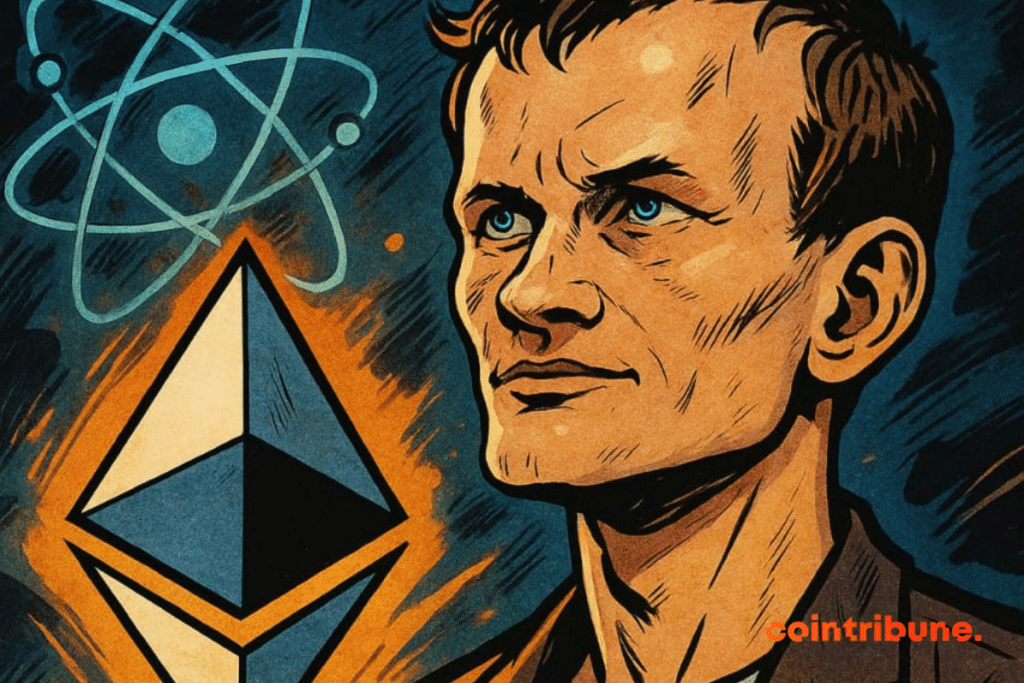Vitalik Buterin: Ethereum Is Ready for the Quantum Era
Quantum computing, often seen as a sword of Damocles hanging over blockchains, has fueled fantasies and speculations for over a decade. In this uncertain world, Vitalik Buterin, co-founder of Ethereum, offers a contrary diagnosis: clear-headed, data-driven, but above all confident. For him, the arrival of machines capable of breaking current cryptographic foundations is not an inevitability, it is a deadline. And Ethereum will be ready.

In Brief
- Vitalik Buterin believes quantum computing will not threaten Ethereum before 2035.
- The Ethereum community is already developing post-quantum cryptographic solutions.
- A native zkEVM will be integrated into layer 1 to enhance security and scalability.
Vitalik Buterin: Clarity Amid the Quantum Fog
During his appearance on the Epicenter podcast, Vitalik Buterin cut through the myth: no, quantum computing will not cause Ethereum to implode overnight. What he counters against the prevailing alarmism is an unyielding analytical rigor, supported by aggregated forecasts from platforms like Metaculus. According to these, the critical threshold—when a quantum machine could break cryptography—would fall between 2030 and 2035.
But Buterin does not just toss numbers around. He carefully distinguishes scientific advances from marketing hype. Because in the quantum world, showmanship is common. Many so-called quantum computers are actually just gadgets incapable of executing the real algorithms threatening modern cryptography.
The key indicator, according to him? The largest number successfully factored with Shor’s algorithm. As long as this number does not exceed 35, networks like Ethereum can rest easy.
A Strategic Anticipation Already Underway
What sets Ethereum apart in this race against time is not just vigilance, but active preparation. Buterin highlights the concrete efforts of the ecosystem, starting with Justin Drake’s work on quantum-resistant aggregation-friendly signatures.
Far from waiting for the storm to react, Ethereum is pushing forward against the tide with structural solutions. The recent roadmap published by the Ethereum Foundation announces the direct integration of a zkEVM within layer 1, within twelve months. This choice is no accident: it relies on succinct STARK proofs, whose very nature is quantum-resistant.
The challenge is twofold: to accelerate scalability while drastically reducing the attack surface of the network. With a proof verifiable in under 12 seconds, even an individual validator will be able to protect the network against sophisticated attacks, all without replaying transactions one by one. A technical feat, but above all a bold strategic anticipation. Perhaps this is what attracts investors. To the point of making it the number one choice for crypto ETFs.
Maximize your Cointribune experience with our "Read to Earn" program! For every article you read, earn points and access exclusive rewards. Sign up now and start earning benefits.

Fascinated by Bitcoin since 2017, Evariste has continuously researched the subject. While his initial interest was in trading, he now actively seeks to understand all advances centered on cryptocurrencies. As an editor, he strives to consistently deliver high-quality work that reflects the state of the sector as a whole.
The views, thoughts, and opinions expressed in this article belong solely to the author, and should not be taken as investment advice. Do your own research before taking any investment decisions.